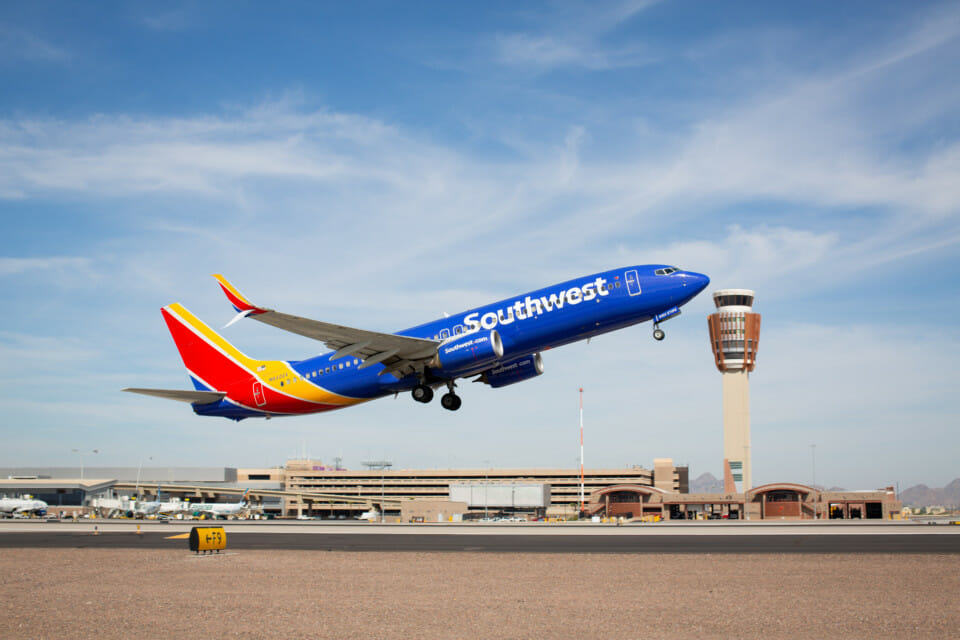Southwest Airlines suffered a major operational meltdown that began on Friday and continued into Monday. What caused Southwest to cancel over 2,000 flights over the past three days. Is Southwest on the level with its customers? Let’s find out.

Photo credit: Southwest Airlines.
The Crisis
The operations at Southwest went into major cancel mode last Friday. On Saturday, the airline canceled an additional 808 flights leaving passengers stranded around the country. The cancelation Tsumani continued on Sunday with a major improvement on Monday with just 337 flights canceled yesterday. In addition to passengers being left behind in the terminals, it didn’t get any better by phone either as Southwest customer service suffered their own meltdown. Customers were spending hours on hold trying to speak with a human.
Here’s What Southwest Says
Southwest is blaming the majority of its problems on weather, particularly in Florida along with air traffic control issues. Southwest did say that they had some staffing shortages that added to the crisis. The focus on the cancellations should be on a shortage of personnel at Southwest and here’s why. The weather did play a role but it was a very minor one on Friday for only a few hours. Southwest also put the blame on a shortage of air traffic controllers in the southeast corner of the U.S. Again, there was no real problem here either. Here is what Southwest had to say:
“We’ve continued diligent work throughout the weekend to reset our operation with a focus on getting aircraft and crews repositioned to take care of our customers,” the airline said in a statement.
Here is what the Federal Aviation Administration said regarding operations at the Jacksonville Air Route Traffic Contol Center:
In a statement, the Federal Aviation Administration said there have been no air traffic-related cancellations since Friday. The agency said that airlines are experiencing delays because of aircraft and crews being out of place. “Flight delays and cancellations occurred for a few hours Friday afternoon due to widespread severe weather, military training and limited staffing in one area of the Jacksonville Air Route Traffic Control Center,” the FAA said.
Here’s the problem, all of the other airlines flew in the same conditions as Southwest without massive flight cancellations. Let’s take a look at operational performance for Sunday. While Southwest canceled hundreds of flights, it was different for their competitors. Both American Airlines and budget-carrier Spirit Airlines only canceled 2% of their flights that day.
Looking At The Real Causes
While most U. S. airlines rely on a hub-and-spoke route model, Southwest flies mostly point-to-point flights. Flying direct flights complicates airline dispatching and operational performance. This gets further complicated when the first flight of the day is either delayed or canceled as it has a cascading effect over the course of the day. That’s one reason why most flights don’t fly after midnight. This after-midnight buffer gives airlines a chance to regroup for the following day. The problem compounds when aircraft are out of place by being at the wrong airports when the next flights need to take off.
The real culprit at Southwest seems to be their own staffing issues. During the pandemic, many Southwest pilots approaching mandatory retirement age simply retired early. When air travel bounced back this summer, Southwest ramped up their flight schedules during a pilot shortage.
Last week, the airline announced a vaccine mandate for employees, fueling speculation that the weekend delays may have been caused by a pilot walk-out.
“Southwest Airlines must join our industry peers in complying with the federal government’s COVID-19 vaccination directive,” Gary Kelly, Southwest Airlines Chairman and CEO said in a statement. “I encourage all Southwest Employees to meet the federal directive, as quickly as possible, since we value every individual and want to ensure job security for all.”
In actuality, Southwest found itself in the middle of a pilot shortage further impacted by its own pilot scheduling issues. The Southwest Airlines Pilot Association (SWAPA) said:
“SWAPA is aware of operational difficulties affecting Southwest Airlines today due to a number of issues, but we can say with confidence that our pilots are not participating in any official or unofficial job actions,” the union said.
Behind the scenes, the airline has had trouble arranging hotel accommodations for pilots and flight attendants leaving them to find rest at the airports. This is another problem for pilots because they require an 8-hour behind-the-door rest period. This means that pilots need to be in a hotel room for a minimum of eight hours to achieve a qualified rest period. This is required for safety reasons to avoid fatigue in the cockpit.
On top of the flight crew personnel shortage, there are also unfilled positions on the ground as well. This was really evident for anybody trying to reach Southwest customer service for assistance and being left on hold for hours.
Final Thoughts
Airlines can suffer operations issues for a variety of reasons. In the case of weather or factors outside of the airline’s control, they are unavoidable. In the case of the Southwest operational meltdown, this appears to be caused by insufficient staffing and major increases in flights. The bigger problem with Southwest seems to be transparency. They wanted to blame everybody and everything else but themselves. If might have bought their explanations if United, American, Delta, Jet Blue and Alaska suffered the same operating issues.

